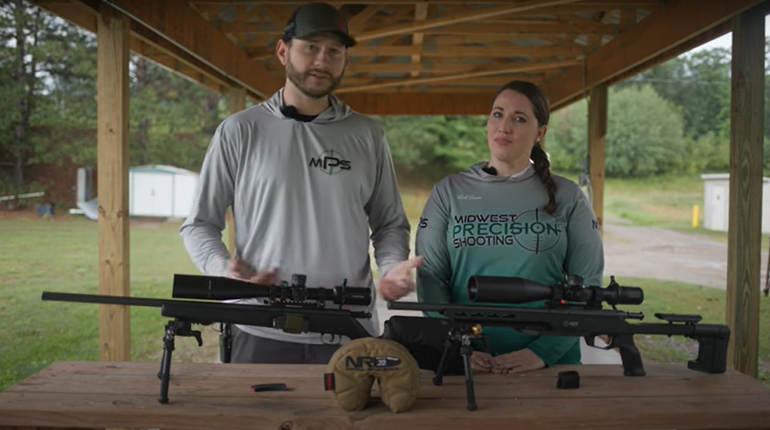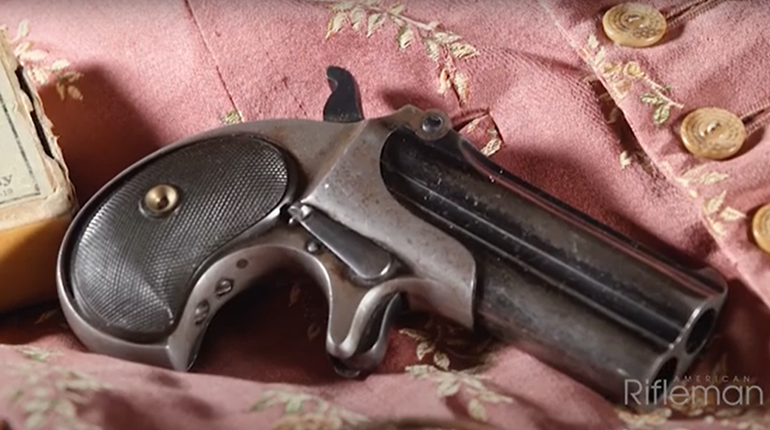
How do bullets fly?
First, let’s think about how bullets fly through the air. We’re talking about bullets, not round BBs. Some shooters think that the wind pushes a bullet off its mark. What actually happens is that the bullet is pulled in the direction the wind is blowing. How does it do that? Think of a football thrown without any wind on the field. The spinning football, like a spinning top, tries to remain in the same “alignment,” or pointed in the direction it was thrown, just like a top tries to remain upright instead of falling over. With no wind, the air flows evenly over the tip and the ball flies straight.
So what if the wind begins to blow? Now, instead of the air passing over the bullet tip evenly, the air is coming from the side. Like the top, the bullet tries to stabilize or fly straight—into the wind, not at the target. When the bullet tip moves to the left, for example, the wider base will move to the right so that the bullet is flying a little bit sideways. Because it’s bigger than the tip, the bullet’s base creates some “drag” (resistance), like when you put your hand outside a car window when it’s moving. That drag pulls the bullet in the direction of the wind. And when a bullet is flying towards the target at nearly 600 miles per hour, changing the direction of the air (wind) makes a difference on the bullet’s path.
So when you’re shooting at targets with no wind blowing, you can simply align your sights with the target in the background and, as long as your trigger squeeze doesn’t move the muzzle, your bullet will fly straight towards the mark. It’s when the wind is blowing that you’ll have to make some adjustments.
How Much Wind Is Blowing?
But how much should you adjust for the wind pulling the bullet to either side? One way is to simply aim into the wind, called “Kentucky Windage.” It takes practice to know how far to move your point of aim, but this method has the advantage of being fast and easy. See the diagram below.
If you have a scope or adjustable sights, you can adjust your sights so that even when you see the target in the center of your sight picture, the barrel is aimed a little to the side of the target to compensate for the wind pulling the bullet in the opposite direction.

This formula only works when the wind is coming from the side. When the wind comes more over your shoulder or in your face, just multiply the above number as follows: Wind coming from about 75 degrees—multiply the answer by .96; 60 degrees—multiply by .86; 45 degrees—.70; 30 degrees—.5 and for 15 degrees, multiply by .25. So now we know that if our flag is at 60 degrees with wind coming at us from about 15 degrees, the wind speed ON THE BULLET would be about: 60 / 4 = 15 x .25 = 3.75 mph.
No calculator? No problem.
Another way to compute wind speed that doesn’t require a calculator and all of those angles is to just pay attention to what’s around you. Here are some general wind speeds you can “read” from the grass, leaves and trees.
- 2-4 mph: You can feel a little wind on your face. Large leaves are rustling in the breeze. The wavy lines of mirage, as seen through a scope, are barely leaning over. A balloon moves as fast as a slow walk.
- 4-8 mph: Smaller leaves are moving. Branches begin to sway. Fast walk.
- 6-10 mph: Pine needles in the trees are beginning to move. Jogging speed.
- 8-12 mph: Grass is moving and tree trunks are swaying. Mirage waves are going sideways. The fastest runner you know.
This will get you started. Practice estimating the wind speed, the angle and the effect they had on the bullet strike on the target.







































